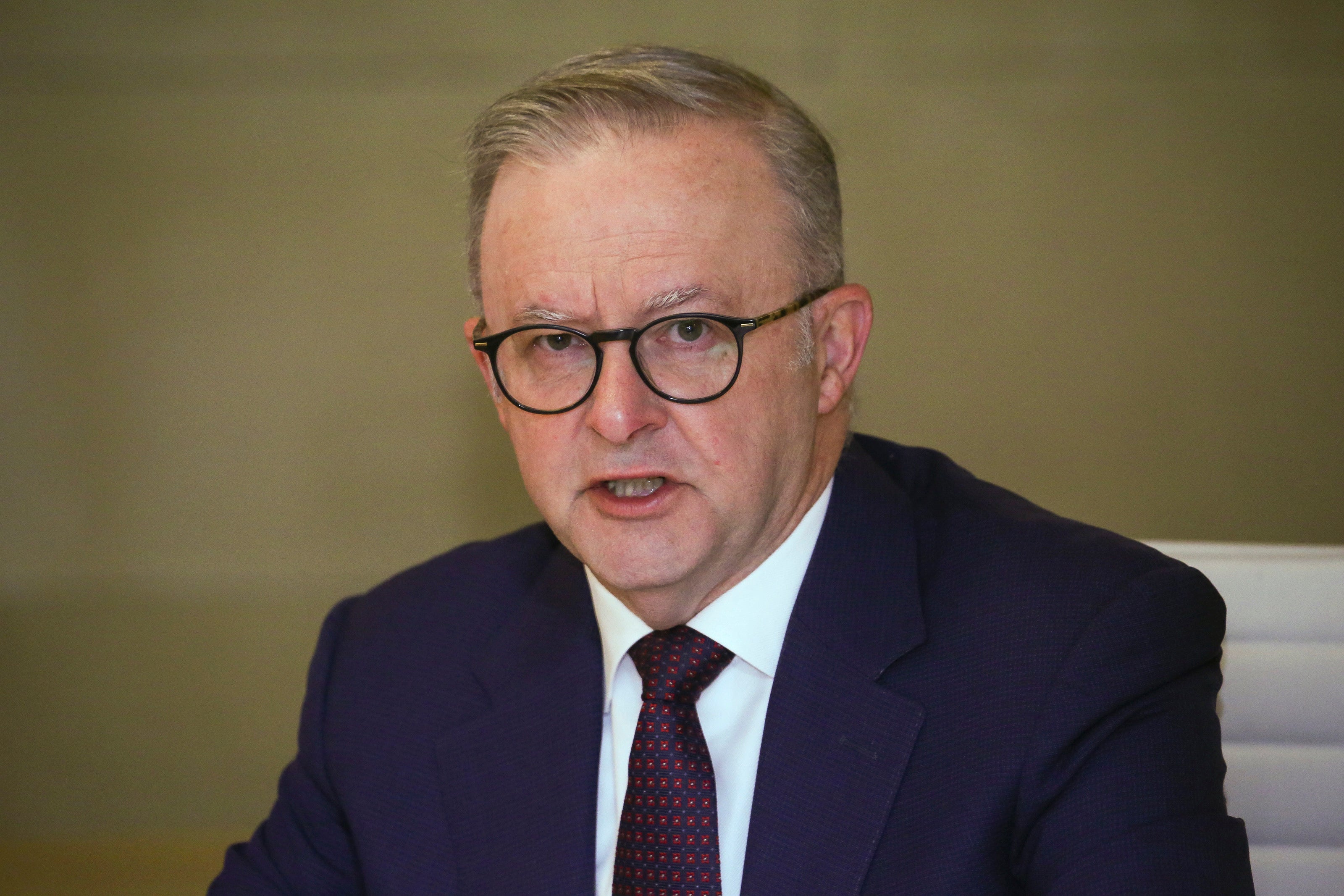Australian PM Albanese vows new funding to help women escape domestic violence after homicides rise
Australian Prime Minister Anthony Albanese has announced new funding to help women escape domestic violence and a crackdown on misogynistic online content in reaction to an uptick in homicides committed by current and former male partners that he described as a national crisis

Your support helps us to tell the story
From reproductive rights to climate change to Big Tech, The Independent is on the ground when the story is developing. Whether it's investigating the financials of Elon Musk's pro-Trump PAC or producing our latest documentary, 'The A Word', which shines a light on the American women fighting for reproductive rights, we know how important it is to parse out the facts from the messaging.
At such a critical moment in US history, we need reporters on the ground. Your donation allows us to keep sending journalists to speak to both sides of the story.
The Independent is trusted by Americans across the entire political spectrum. And unlike many other quality news outlets, we choose not to lock Americans out of our reporting and analysis with paywalls. We believe quality journalism should be available to everyone, paid for by those who can afford it.
Your support makes all the difference.Australian Prime Minister Anthony Albanese announced new funding on Wednesday to help women escape domestic violence and a crackdown on misogynistic online content in reaction to an uptick in homicides committed by current and former male partners that he described as a national crisis.
Albanese said his government would invest 925 million Australian dollars ($599 million) over five years to financially support women and children escaping violence.
The government also proposed new measures to tackle factors that it says exacerbate violence against women, such as violent online pornography and misogynist content targeting children and young people.
The measures would include legislation to ban deepfake pornography and more funding for an Australian regulator to pilot age-assurance technologies to protect children from harmful online content.
“This is, indeed, a national crisis and it’s a national challenge and we’re facing this with a spirit of national unity,” Albanese told reporters after a meeting with state and local authorities.
Tens of thousands protested in cities around Australia over the weekend to draw attention to the deaths of 27 women so far this year, allegedly caused by acts of gender-based violence. The death toll had reached at least 28 women by Wednesday.
The government leaders will meet again in three months to discuss progress.
“I'm satisfied it's a further step forward,” Albanese told reporters.
“Can we be satisfied when a woman’s losing her life on average every four days? Of course not,” the prime minister said.
“I’ll be satisfied when we eliminate this as an issue, when we’re not talking about this as an issue, when women are not feeling as though they have to mobilize in rallies,” he added.
The Australian Institute of Criminology reported that in the 12 months through June 2023, 34 Australian women were killed by an intimate partner. That is the latest complete fiscal year for which the institute has data and represented a 31% increase in victims from the same 12-month period a year earlier when 26 women died.
The increase defied a longer-term downward trend in Australia.
Since 1990, there had been a 66% decrease in “intimate partner homicide rates” across Australia, the institute’s research manager Samantha Bricknell said.
The lowest rates of intimate partner homicides were in the 2020-21 and 2021-22 fiscal years, a result that reflected pandemic restrictions.
“We have gone back to sort of the rates that we were seeing pre-COVID. So, what we’re really interested to see going forward ... is, is this a sustained increase? That’s something that Australia needs to be worried about,” Bricknell told Australian Broadcasting Corp.
“It is very concerning and understandably the Australian population are very concerned,” she said. “More recent data suggests that it is going up, but hopefully we’ll see that that slight uptick turns around and continues to decrease.”